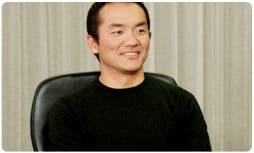One Integrated Experience
Great. So as we talk about Nintendo TVii, why don't we start with the consumer proposition. What is Nintendo TVii and why is it something that has the potential to really reshape the consumer's experience with video content? Zach, why don't you start.
We are watching more video than ever. We now watch on average five hours every day, but how we're consuming it is becoming more complicated. cable and satellite TV, which 104 million households enjoy, now has hundreds of channels. We have a growing amount of time-shifted viewing through DVR, and we have growing services like Netflix5, Amazon Instant Video6, and Hulu Plus7 that are providing more ways to watch video.
There's great content, and a multitude of viewing options, but the process of finding and controlling a program has become too complicated. Then, once you are watching, most viewers are now using a second screen to augment the experience, both socially and in the search of information.
Nintendo TVii addresses this changing landscape by bringing together everything you need – a personalized guide, a super remote, and a social TV experience – into one seamless application on the GamePad. This makes watching TV easier and fun.
5. Netflix: Netflix, Inc. offers subscription services for instantly watching TV shows and movies over the Internet. Established in 1997; headquartered in Los Gatos, CA
6. Amazon Instant Video: A video on-demand streaming and download service provided by Amazon Digital Services, Inc. The service became available in 2006.
7. Hulu Plus: A provider of on-demand streaming video content operated by Hulu, LLC headquartered in Los Angeles, CA. Established 2007.
And so Brad, from your perspective, you've been experimenting in this space, as you mentioned, with smartphones, with i-devices. Why is the GamePad such a great tool for this wonderful, integrated second screen experience?
Well, the Wii U and the GamePad provide the first platform of its type that brings together your over-the-top services like Amazon Instant Video, Netflix and Hulu Plus with all your cable and satellite channels through a common interface. And since the GamePad typically remains in the living room, instead of someone's bedroom, bag, or pocket, it's ideal for the entire family.
With this shared control in the home, and each family member with their own Mii, we have these personalized profiles that everyone can setup of what you like to watch. So now you've got the ability to quickly see what's on and upcoming for all your favorite shows and sports – all from a personalized experience on the GamePad.
Masaki, a question for you. What was it like working with an experienced partner like i.TV?
It's been a great learning experience. Bringing Nintendo TVii to consumers on Wii U has required great collaboration between Nintendo, i.TV, and other development partners. Nintendo and i.TV share a common vision for innovation, and I've felt this passion from i.TV on a daily basis.
Zach, you really were a key individual in selecting a partner for Nintendo TVii. From your perspective, why was i.TV the perfect partner?
It really comes down to a shared vision. There are many companies that are approaching this space differently — there's many that are doing just a program guide, there are some that consider themselves just a remote control company, and there are some that are only in social TV. And i.TV shared the vision with Nintendo that there needs to be one, unifying experience that brings together a personalized program guide, remote control, and a social experience, all on one second screen. In addition, many companies we evaluated were designing UIs that we believed were too complicated for everyone. We wanted to build an experience that everyone would find simple and intuitive, and i.TV was also committed to that philosophy.
So now, Brad, I'm going to put you on the spot. What's it been like working with Nintendo as a partner?
The relationship has been highly collaborative. We've been able to benefit from Nintendo's experience about what makes experiences simple and fun for all ages. Combine that with i.TV's expertise working with massive amounts of complex information — thousands of channels, TV providers, video services, and all the information around every program you can watch — and then make it really smart, so it can be highly personalized. Together, I think we've come up with something that's really magical, because it's so simple that my little 5-year-old daughter, my own little focus group, can use this system, and yet my teenage boys also love to use it for its deeper experiences–especially with sports.
That's great. So let me shift gears a little bit and talk about why Nintendo TVii is such a regionally driven project, touching on the differences with regional TV habits and why this product fundamentally looks the way it does and why it looks different than what might be in other Nintendo regions. And to that end, Masaki, let me start with you, because you've spent time in Japan. Masaki, you grew up in Japan.
Yes. I was born in Japan, and grew up there. I then moved to the United States 8 years ago with my family.
Then you know that TV environment. Obviously, you know the TV environment here in North America. Talk a little bit about why Nintendo TVii has to be different regionally.
In order to explain that, I think I have to explain the market differences—market landscape differences between Japan and the U.S. market. In Japan, the majority of people watch TV over the air and the number of channels is very limited. Most people only watch a few channels, versus in the US, where there are so many cable providers and satellite providers. You have hundreds of channels to choose from, and also the Internet-based VOD services that have become mainstream. So the industry landscape is very different. That's the main reason why we needed to build different experiences in each region.
And, Zach, any other points from your perspective on why this project had to be so specific to the various regions?
As Masaki points out, the market for watching TV is different globally. And if you also consider sports, the differences become even more pronounced. However, what has been special about Nintendo TVii is how the development team in Japan embraced these differences. They had a truly worldwide vision with foundational consistency while also supporting local market dynamics. So from the very beginning, the NCL team was tremendous in understanding Nintendo of America's vision for our market while supporting the development of the platform and tools necessary to deliver it.
Right. One of the things you touched on, Zach, was social, and social is a key part of the Nintendo TVii experience. Let me start, Brad, with you. Why was social such an integral part of this product proposition from your perspective?
Well, let me start by telling you an interesting story about our beginnings. When we first released our TV guide for smartphones, it happened to be the presidential election in the Unites States four years ago, and the week of the launch, we were watching people use a new feature in our app where you could post a review about what you were watching. During the presidential debate, they were debating with each other—the users, in this case—back and forth by using the review feature, which was not intended for that purpose at all. Then it dawned on us that we'd built this great TV guide, but now people wanted to be able to engage around what they were watching. And so we began development of something beyond just the guide itself.
We know today that the number one trending topics on social networks every night happen to be TV topics. And what's lacking in those experiences—those broader experiences—is context. So it's this big crowd roar every night during prime time, but when they're saying "great play" or "I can't believe that happened," we have no idea what that's related to—what game, who are they talking about, etc. So we had to build a social experience that provided context. It had to be synchronized with the television experience, and allow viewers to share not just broadly in the one-hour program, but in each moment as the program progressed.
That's great. You know, the point you raise about activities happening today, where folks are socially interacting about shows, but it literally is a shout in the dark, because you have no sense as to what it is that they're referring to. Right? I've got a friend of mine who is posting about various shows on their Facebook8 page and I have no clue what she's referring to, so it's this one-way monologue that as a reader you're looking at and saying, "Boy, what does this mean?" But by tagging it—right, with the TV Tag feature—tying it to the specific situation, all of a sudden it has a lot more meaning.
Exactly. 8. Facebook: A social networking service operated by Facebook, Inc. Established in 2004, its headquarters are located in Menlo Park, CA.


